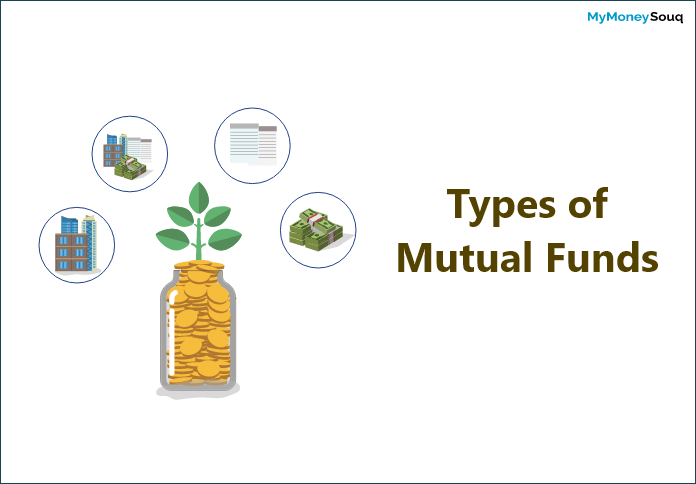Mutual Funds are one of the most popular investment options. The diversified portfolio of investments and ease of use makes mutual funds the most preferred option. Not all investors have the same investment goal nor can take the same risk. Each investor has their own strategy and tends to pick an investment option according to it. To pick the apt mutual funds, a mutual fund investor must understand the working and types of funds before investing.
Mutual funds are classified into two different ways according to different ways like risks, investment class, maturity period.
- According to the Asset Class
- According to the Structure (maturity period)
Check: What do you need to know about NRE Accounts
Mutual Funds according to the Asset Class
These funds are differentiated according to the investment strategy and risk appetite of the investor. The types of mutual funds according to the asset class are listed below,
- Equity Funds
- Fixed-income Funds
- Money Market Funds
- Balance Funds
-> Equity Funds
These are also called as Stock funds where the money is invested in the stock market. Though these funds provide good returns, they are considered highly risky considering the volatile feature. It is an ideal investment option for budding investors as it provides good returns over the long run.
Investors can avail different types like small-cap stocks, mid-cap stocks and large-cap stocks which vary according to the company’s value in the market.
-> Fixed-income Funds
In the fixed-income funds, the majority of the money is invested in debts like securities, bonds, etc. These are also called Debt funds. For investors looking for a low-risk investment option, this is ideal and the risk appetite is low and as the name suggests a fixed income is generated. People who are nearing retirement age opt for fixed-income funds than equity funds considering the risk probability.
Related: Fixed deposits or National bonds which provides high-interest rates
-> Money Market Funds
Similar to the equity funds where the investment is made on the stocks, in the money market funds the investment is made on the money market or capital market like government bonds, certificate of deposits, etc. This is a low-risk investment option with moderate risk and also a short term one.
-> Balanced Funds
Balanced Fund is a type of mutual funds where the money is split into different investment options to balance out the risk and returns. The investment is divided into equities and debts that are Equity funds and Fixed-income funds. It is also known as Hybrid Funds. The investment allocation depends upon the market risk. This is for investors looking for options with moderate returns.
Mutual Funds according to the Structure
Mutual Funds are categorized according to the different attributes like maturity period. The types are,
-> Open-Ended Funds
Under the open-ended scheme, the investor can purchase or sell the funds whenever they want to. There is no fixed period for funds trading. The fund manager actively manages the funds hence there can be an additional fee charged the asset management company for regular management of the funds. Even the funds under this scheme have no fixed investment amount that needs to be made. The investor can buy or exit the funds at any particular Net Asset Value (NAV). Overall, the investor can withdraw the funds anytime he wants and encash it.
Also, check: How can I save money in a limited salary in UAE
-> Close-Ended Funds
In the close-ended funds, the units can be purchased only at the specific time called “New Fund Offer” and sold only after the specific maturity date. Once the offer is closed, no further investments are accepted. The investors need to wait until the maturity period and liquidate it at the prevailing NAV.
-> Interval Funds
Interval funds are like the combination of open-ended and close-ended funds. For a particular time, these funds are open for the purchase and once the open time is over, the purchase cannot be made. During the investment tenure as the funds are open for repurchases at specific intervals, investors can trade the funds at that time.
With the availability of various types of mutual funds according to different attributes, it can be tricky for the investors to pick the right one. The investor first needs to decide the investment goal, for what is the investment is being made and when are the returns expected. Along with this one important attribute is the risk. How much risk are you willing to take? Once these are decided it would get easy to pick the right investment strategy and proceed with the investment.
Irrespective of the type of mutual funds, there is always a risk involved be it low or high. The investor should read the terms and conditions of the funds and understand each and every factor and feature of the investment. Choosing the wrong investment type that does not align with your investment goal can end you up in losses.

